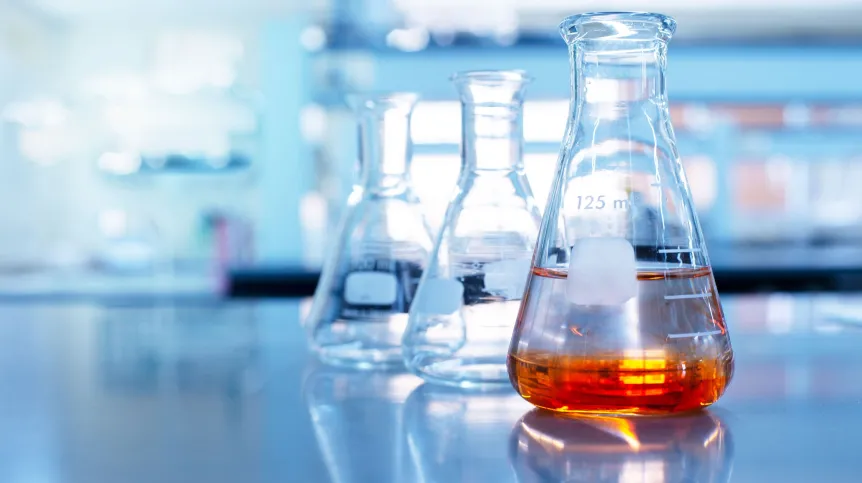
Polish researchers have developed a material that transforms methanol into formaldehyde under visible light, at room temperature and normal pressure, offering a potential green alternative to conventional, energy-intensive production methods.
Formaldehyde, often used in resins, adhesives, plastics, insulating foams, and paint additives, is toxic and potentially carcinogenic, requiring strict emission controls.
Industrial production typically involves reactions at several hundred degrees Celsius on catalyst surfaces.
The new approach relies on photocatalysis, where light drives the chemical reaction. The material combines a porous metal-organic framework (MOF) and conductive titanium carbide (MXene) flakes.
The MOF arranges methanol and oxygen molecules in ordered channels and absorbs photons, while the MXene quickly transfers electrons to prevent energy loss. MXene flakes are decorated with carboxyl groups, which chemically bond the MOF and MXene, enabling rapid charge exchange.
In experiments, the sample containing 1.5% MXene produced 7.08 micrograms per milliliter of formaldehyde after four hours of visible light irradiation (>420 nm) and retained activity through multiple cycles without noticeable degradation.
Tests confirmed that positively charged “holes” drive the reaction, while oxygen acts as an electron acceptor, forming reactive species that sustain charge separation. A simple powder mixture of MOF and MXene performed worse, showing that close contact between the components is critical.
Researchers note that visible light from lamps or the Sun could replace some of the heat currently supplied by furnaces and compressors.
While efficiency and selectivity still need improvement, the material’s architecture—MOF as a porous stage and MXene as a director of electron flow—offers a promising platform for developing simpler, safer, and less energy-intensive chemical production methods. Using methanol derived from biomass could further align the process with low-emission, green manufacturing goals.
The technology was developed by scientists from the University of Gdańsk (Faculty of Chemistry) in collaboration with the Silesian University of Technology, the Institute of Physical Chemistry of the Polish Academy of Sciences, and Gdańsk University of Technology, and published in Applied Surface Science.
Krzysztof Petelczyc (PAP)
kmp/ bar/
tr. RL













